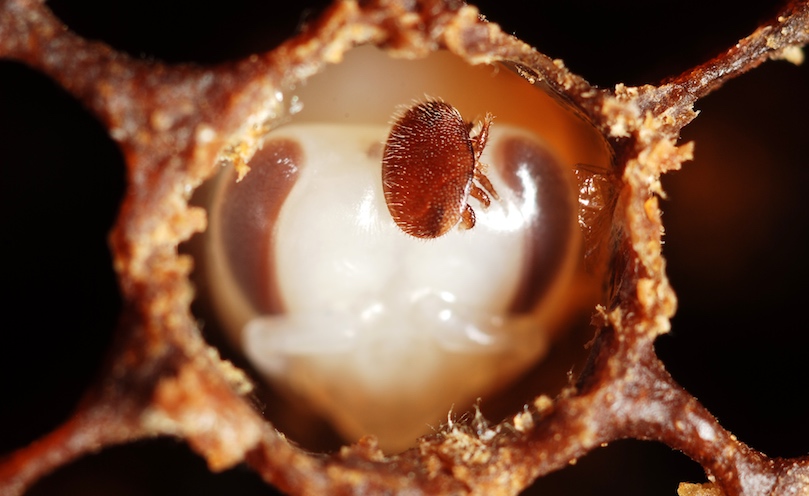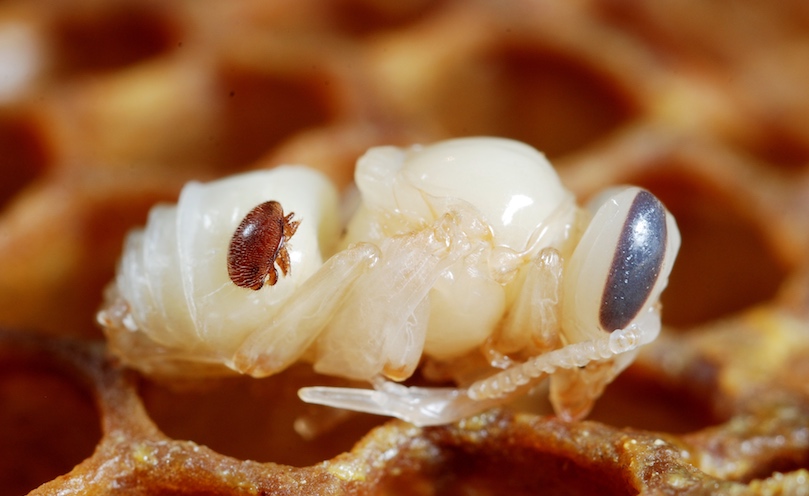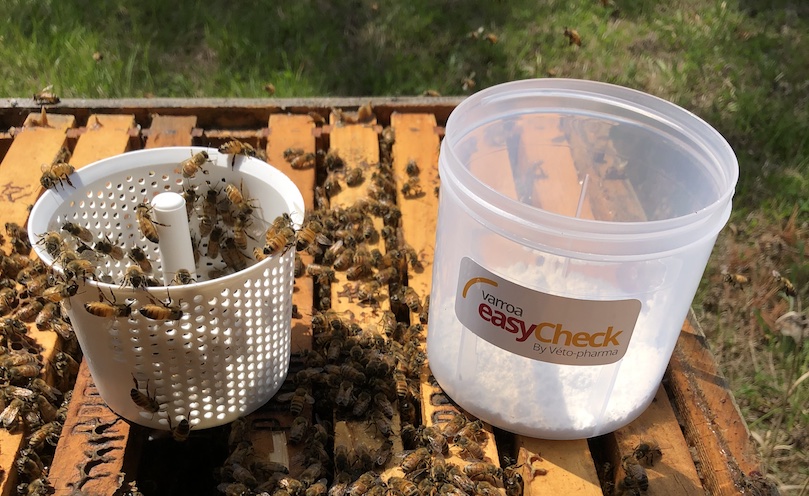Infestation monitoring: the foundations of any successful control strategy
Infestation monitoring allows you to be aware of the varroa pressure in your apiary and, therefore, to take the most appropriate management decisions depending on the situation in your hives (immediate treatment or not, mechanical means to reduce parasite pressure,…).
Following a treatment, it also allows you to calculate / check the treatment efficacy, and estimate whether a complementary treatment may be necessary or not.
Knowing the level of varroa mites present in your hives will help you to make the right treatment decisions, and thus avoid your colonies entering winter with too high of an infestation pressure (increased risk of winter mortality and weaker colonies in the spring).


When to monitor the infestation?
Monitoring should take place at least three times a year:
In early spring, after the last honey flow (before application of the main treatment) and at the end of the treatment (autumn) to assess its efficacy and to know the level of infestation after treatment.
A fourth control can be carried out in brood-free colonies before wintering (November).
Why monitor in time?
Evaluation and monitoring of the varroa mite population is the basis of an integrated pest management strategy.
The longer one waits to confirm the level of mite infestation, the higher the risk. A delay in treatment can reduce the chances of a colony surviving the winter and contribute to the spread of varroa mites to other colonies.1


Is monitoring cost-effective?
Although monitoring infestation can sometimes be time-consuming, the information obtained is well worth the effort.
Avoiding the cost of replacing dead colonies, the loss of honey production (-5kg per hive on average!2) and the unavailability of colonies for pollination, queen production or swarming are compelling reasons to monitor infestation levels throughout the year.
Infestation monitoring helps to identify variations in infestation from one year to the next, and from one hive to the other, and thus helps to optimise and make its control actions more profitable.
Which monitoring method to choose?
Three main methods are suggested for monitoring mite infestation: alcohol wash, sugar roll and CO2 injection.
Other methods are available, such as monitoring natural mite fall on the sticky boards, and uncapping male brood, but may be more time-consuming or give results more difficult to interpret.
In any case, it is best to choose the method you are most comfortable, enabling consistency in monitoring your hives.
Monitoring infestation with a less reliable method is better than no monitoring at all. When it comes to monitoring infestations, the rule “better done than perfect” applies.


Very complete PowerPoint presentation on infestation monitoring (why and how to do it?) and on the Varroa EasyCheck 3 in 1 tool.
References
1- https://www.adage.adafrance.org/downloads/documents%20ressources/2020_synthese_enquetes_printemps_2020_grand_est_vfinale.pdf
According to a survey conducted each year in Eastern France, the later the treatment is applied, the higher the winter losses. Study conducted in 2020 on more than 29,000 hives.
2- Maisonnasse et al, 2014 – Study carried out by INRA (France) between 2009 and 2012 on 552 hives. Average of 5 kg (1 to 13 kg per year) on a lavender honeyflow.
Copyright image banner
© Camilius Lay
VTP-74-EU-N02-02/22
